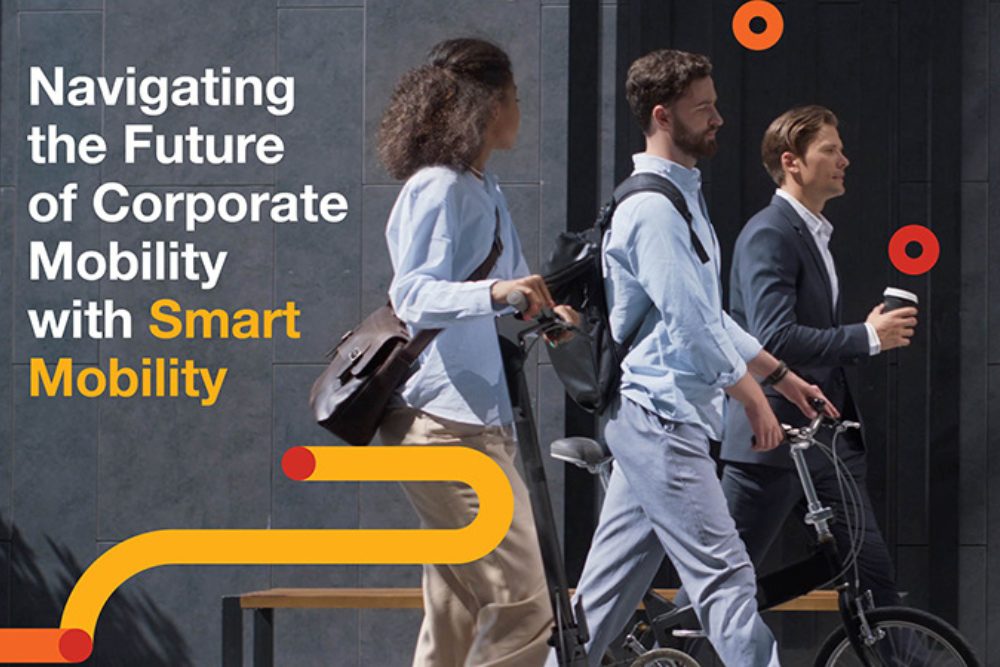
The interest among Belgian citizens in active modes, public transport and shared mobility confirms the claim by MaaS for a modal shift. That results from a survey conducted by the Belgian Federal Public Service Mobility and Transport. According to the participants, they are very interested in MaaS applications, but current use lags behind.
Survey points a strong interest in MaaS
The survey was conducted online and reached 3,000 Belgians representative of the population. We measured both current use for a range of mobility apps (MaaS solutions and their components) and the interest in them, their potential use so to say. The results were published in April 2022 in French and Dutch.
It was found that the use of mobility apps is higher, the younger the participant is. Route planners were the preferred and most commonly used tool.
An important finding was that despite the use of a smartphone or tablet, almost 41% of all participants had no mobility apps. Several possible explanations were found. First of all, if one is satisfied with the mobility options and the information at their disposal, there is a non-existent need for such apps. Secondly, the smartphone usage has to be counted in as well, as some people rarely use their devices (or not outside).
There is still a huge unexplored potential, since the interest in applications clearly outstrips their usage. Almost 6 out of 10 participants stated that they would be interested in using a comprehensive MaaS application. The majority of these are to be found either among the higher employed, educated, male and those who live in the Brussels Region.
Finally the study focused on the motive for using mobility applications. Almost 80% stated that they would use a MaaS application for recreational trips, such as holiday trips. There was a lower, but still notable interest for utilitarian trips, which garnered an interest from 60% of all participants.
Summary of the results by creating a MaaS index
By developing a new composite index in which we aggregate the answers to the potential and current use of mobility apps, we measure the interest of Belgian travellers in MaaS. This index assigns a score between 0 (because of lack of a tablet or smartphone) and 100. Multimodal and intermodal behaviour leads to a higher score on this index.
The results obtained from our sample are between 0 and 98 out of 100. This particularly high score indicates both the use of multiple mobility apps, for numerous functions including payment, and a great interest in the development and integration of these functionalities in a single application, i.e. MaaS.

The score 0, which can be interpreted as no interest in MaaS, includes the 6.4% of people who do not use a smartphone or tablet. The weighted average for the entire population is 41.4, with half of the population having an interest of less than 40 according to the index scale (standard deviation = 18.2).

We do not see much variation in this average when the results are broken down by gender or location of the respondents. However, it is interesting to differentiate these results according to the age and degree of the respondents. We do see a difference of almost 10 for the index between people with at most a lower secondary education degree (35.9/100) and people with a higher education degree (45.2). Those with a higher secondary education degree are in between with an average of 40.0. We noticed a big difference between the highly educated and the lower educated (45.2% vs 35.9). Finally, this index clearly shows a greater interest and potential among the younger population: the average for the 18 to 35-year-olds is 48.7 and falls back to 33.5 among the over-65s.
MaaS creating a modal shift?
Four out of ten respondents expect that MaaS usage will impact their travel behaviour. We did not simply assume an effect in the desired direction of more sustainable choices. After all, it is perfectly possible that a MaaS user who does not currently own a car, would use a car more often with MaaS, or that a MaaS user who would find their way more easily with public transport will no longer walk short distances. However, and fortunately we might say, it was found that MaaS solutions will most probably result in a modal shift. Indeed, respondents whom considered changing their travel behaviour because of MaaS, did so mainly in favour of public transport (+27.9% net impact) and by foot/bicycle (+21.1% net impact), while car usage would decrease to a lesser extent (-14.9% net impact).
Table – Share of respondents who would change their travel behaviour because of MaaS
(personal assessment), by transport mode
| % that would use more | % that would use less | Net impact | |
| Public transport | 35.3% | 7.4% | + 27.9% |
| By foot or by bicycle | 29.2% | 8.0% | + 21.1% |
| Car | 10.4% | 25.3% | – 14.9% |
Conclusion
This first survey conducted on the Belgian population indicates that there is a strong interest in MaaS applications among all age groups. There remains a huge untapped potential for MaaS, shown by the discrepancy between the interest and the actual usage of MaaS applications.
Important to note is that a strong share of all participants considers to change their travel behaviour thanks to MaaS, mainly in favour of public transport. This seems to imply that MaaS solutions will result into a modal shift.
Written by Aiko De Mol from the Belgian Ministry of Mobility and David Schoenmaekers, Responsible for Intelligent Transport Systems (ITS) at the Belgian Transport Administration.



